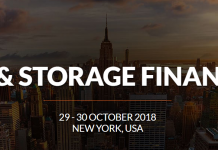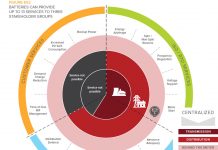As regular readers know, I’ve been a small company securities lawyer for almost 30 years and immersed in the energy storage sector since early 2004. During my career I’ve had many clients in diverse industries succeed and fail. While their businesses have all been quite different, they invariably go through the same stages of initial excitement over a novel idea, disenchantment as the business model proves difficult and costly to implement, and sustained growth when diligent pursuit of the business model begins to bear fruit. In many ways the life cycle of a small company is like a marriage that begins with an overly optimistic honeymoon, gets rocky for a period of years as the reality of paychecks and budgets sinks in, and then strengthens over time to become something valuable and enduring.
My favorite example of a typical small company growth cycle is J2 Global Communications (JCOM), a company that I got to know first as a customer and then as a stockholder. J2 went public in July 1999 in at an IPO price of $9.50 per share (market capitalization $312 million) and its stock price immediately began a gradual downhill slide to a low in the $0.30 range (market capitalization $16 million). While the market obviously hated the stock, I loved the service, believed J2 had a bright future and bought its stock in the $0.50 range. After living through the indignity of a reverse split, J2’s stock price recovered nicely and I ended up selling for a triple in late 2002, which proved to be dreadfully premature. The full trading history of J2 is summarized in the following graph.
I began researching Active Power last fall because they manufacture and sell uninterruptible power supplies based on a flywheel technology that’s similar to what Beacon Power (BCON) is developing for grid-based applications. While Active Power’s focus is data centers and other facilities that need extraordinary power quality and reliability, its solutions should be easy to scale up as demand for grid-based systems develops. When I first began comparing the two companies, Beacon was sporting a market capitalization of $80 million and Active Power was limping along with a market capitalization of just $24 million. When it came to business fundamentals, however, Active Power had a comparable product, comparable stockholders equity, smaller operating losses and a far more impressive business history. That led me to the inescapable conclusion that Active Power had attractive upside potential while Beacon had worrisome downside risk.
Active Power went public in August 2000 in an IPO price of $17 per share (market capitalization $640 million) and after an initial run-up; its stock price began to tank. The price ultimately decayed to the point that even after a reverse split it traded as low as $0.22 per share last winter. The full trading history of Active Power is summarized in the following chart.
While Active Power’s stock price chart tells a tale of unmitigated disaster, the selected financial data from its last Form 10-K tells an entirely different story; a story of sustained growth, improving margins and declining losses (click on figure for a larger view). In other words a management team that’s had the courage to stay the course even when times got tough is successfully implementing their business plan.
During the first six months of 2009, Active Power booked a 24% year on year sales growth and improved its gross profit margin from 12% to 26%. In my view these are solid performance metrics for a small company in recessionary times.
I bought Active Power in the fourth quarter of last year at $0.26 per share because I saw the same long-term pattern developing that I experienced with J2. So far the investment has been very good for me and its market value has increased by 185% in eight months. Since I believe Active Power is turning an important corner in its business development and I’m convinced that overall growth in the energy storage sector will be spectacular for decades, I won’t be anywhere near as quick on the trigger as I was with J2. I may even buy a little more.
DISCLOSURE: The Author is long Active Power
John L. Petersen, Esq. is a U.S. lawyer based in Switzerland who works as a partner in the law firm of Fefer Petersen & Cie and represents North American, European and Asian clients, principally in the energy and alternative energy sectors. His international practice is limited to corporate securities and small company finance, where he focuses on guiding small growth-oriented companies through the corporate finance process, beginning with seed stage private placements, continuing through growth stage private financing and concluding with a reverse merger or public offering. Mr. Petersen is a 1979 graduate of the Notre Dame Law School and a 1976 graduate of Arizona State University. He was admitted to the Texas Bar Association in 1980 and licensed to practice as a CPA in 1981.









I’m long as well… for similar reasons. I used to own both ACPW and BCON, but sold BCON because of the weaker fundamentals.
While I generally concur with your observations, I am concerned by their cash position. Even if one assumes ongoing sales and GM improvement, they may come very close to needing additional cash in approximately 12 to 18 months. Therefore, if I had a position, which I don’t, I’d be concerned about dillution.
Further, while conceptually ACPW could scale their product to compete with Beacon, (I also don’t have a position in them.)I suspect this would require a substantial investment. I doubt they would do that with cash tight.
Further still, new battery technology, as you frequently describe, may change the market economics for both BCON and ACPW.
m alexy-
To your last point, I don’t think that improved batteries will overly impact the economics of frequency regulation. Even advanced batteries have limited cycle life, and frequency regulation applications such as BCON’s cycle the storage on the second and minute time scale… this would play havoc with batteries.
A better supercapacitor, such as what EEStor claims to have might be a different matter.
m alexy, stockholders always fret about the great bogeyman ‘dilution’ but the fears are usually misplaced. When an issuer sells stock for a price that equals or exceeds book value per share, the purchaser of the shares suffers dilution, not the existing stockholders. Think of it as a glass of beer, if somebody adds water you’re diluted but if they add a shot of whisky it’s another story altogether.
ACPW raised about $3 million in June at $0.50 per share. It may need additional cash in the future to grow its business, but as long as the pricing is reasonable, everybody benefits. My first rule of small company finance is “Take the money when it’s available because you will need it.”
Tom…Agreed, for at least the next 5 and probably 10 years. And yes, I should have written “storage” rather than “battery”.
John…couldn’t agree with you more regarding “take the money…”. Also, if the new money pays market, of course there is no dilution. I’m not convinced of ACPW’s “story”. Therefore, I fear their next raise may be more expensive. I don’t mind waiting a while on this one.
In contrast, I like AXPW’s “story”. So I have much less concern about “placing my bet” with them. Thanks for singing their praises.
From a technical viewpoint, the Beacon and the ACPW flywheels are somewhat different animals. Beacon’s rotate at very high speeds using a relatively lightweight composite flywheel, while ACPW uses heavy steel flywheels rotating much more slowly. Beacon’s can store more energy since the energy storage goes up as velocity squared, while adding more weight adds more energy in a linear fashion. More energy stored = more profit in a frequency regulation outfit. Of course if you have a problem in a flywheel spinning at 50k RPM, you get a pretty big bang, which is why the Beacon flywheels are inside a heavy steel enclosure! I tend to agree that ACPW might not be a good play in the frequency regulation market since that is not their focus, and converting to this focus might be expensive and difficult to compete with Beacon and the battery folks. Their data center focus is pretty enviable however.